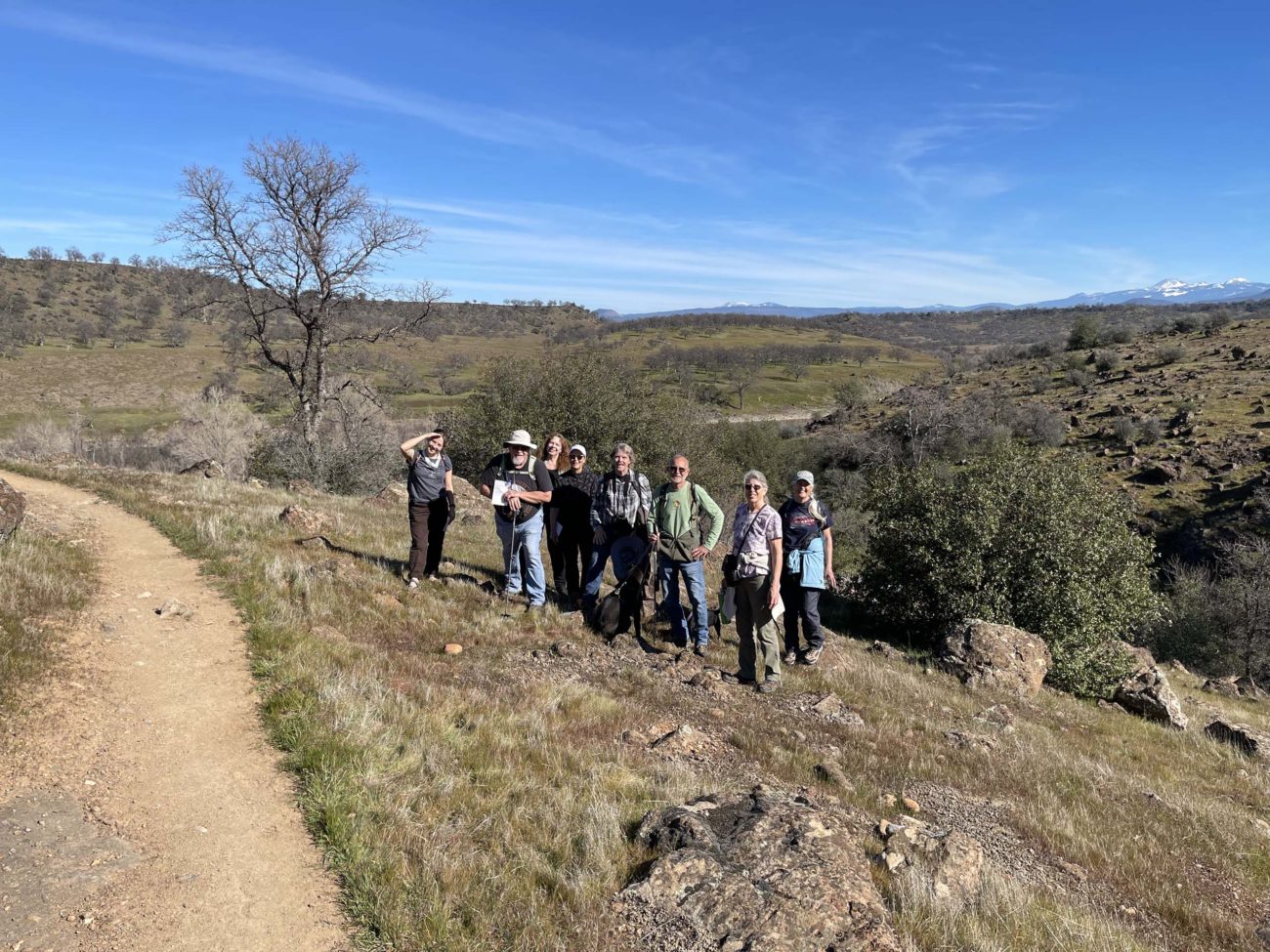
On Saturday, February 5, 2022, Shasta Environmental Alliance (SEA) led an enjoyable field trip on the Yana Trail, starting at Perry’s Riffle in BLM’s Sacramento River Bend Recreation Area. This was an easy 3.5-mile hike under beautiful clear skies and with views of surrounding mountains. The age range on this hike was roughly 21 to 70 years old, and everyone did great!

We found a few winter-blooming wildflowers and plants on the hike, including lowland shooting-star (AKA padre’s shooting-star; Primula clevelandii ssp. patula), johnnytuck (Triphysaria eriantha ssp. eriantha), yellow carpet (Blennosperma nanum var. nanum), California pipevine (Aristolochia californica), foothill lomatium (Lomatium caruifolium var. denticulatum), and buckbrush (Ceanothus cuneatus var. cuneatus). Other non-blooming plants that we were able to identify included Kellogg’s yampah (Perideridia kelloggii), California button-willow (Cephalanthus occidentalis var. californicus), coffeeberry (Frangula californica ssp. tomentella), blue elderberry (Sambucus nigra ssp. caerulea), California buckeye (Aesculus californica), and many oaks (Quercus spp.) and riparian trees. Oracle oak (Quercus x morehus), a cross between interior live oak (Quercus wislizeni var. wislizeni) and California black oak (Quercus kelloggii), was in abundance in the floodplain above the river.

Walk leader David Ledger opened up a pipevine flower to illustrate pollination of this species and found some 10 to 20 very small gnats or flies inside. These small insects enter the flower to get nectar and have trouble getting out through the U-shaped floral tube. After flying around for some time trying to escape, the small insects get pollen on their bodies and, when they finally do escape and find another flower with nectar, they transfer the pollen to pollinate the flower.

This area should have considerably more blooming wildflowers in the next two weeks. Thanks to José Hernández for taking photos of our field trip.
~David Ledger, SEA President
